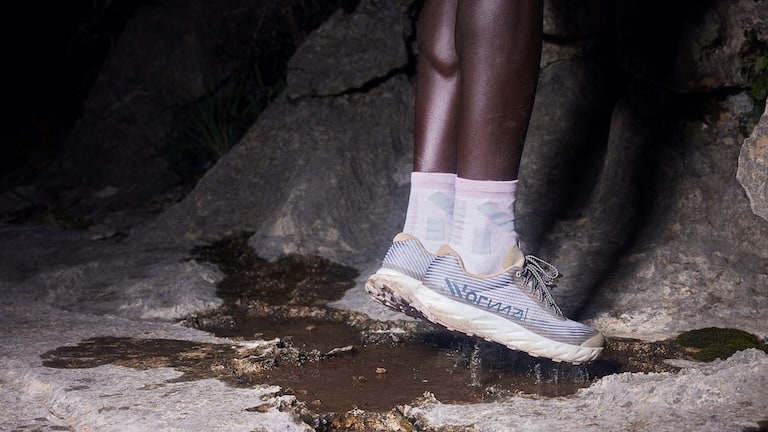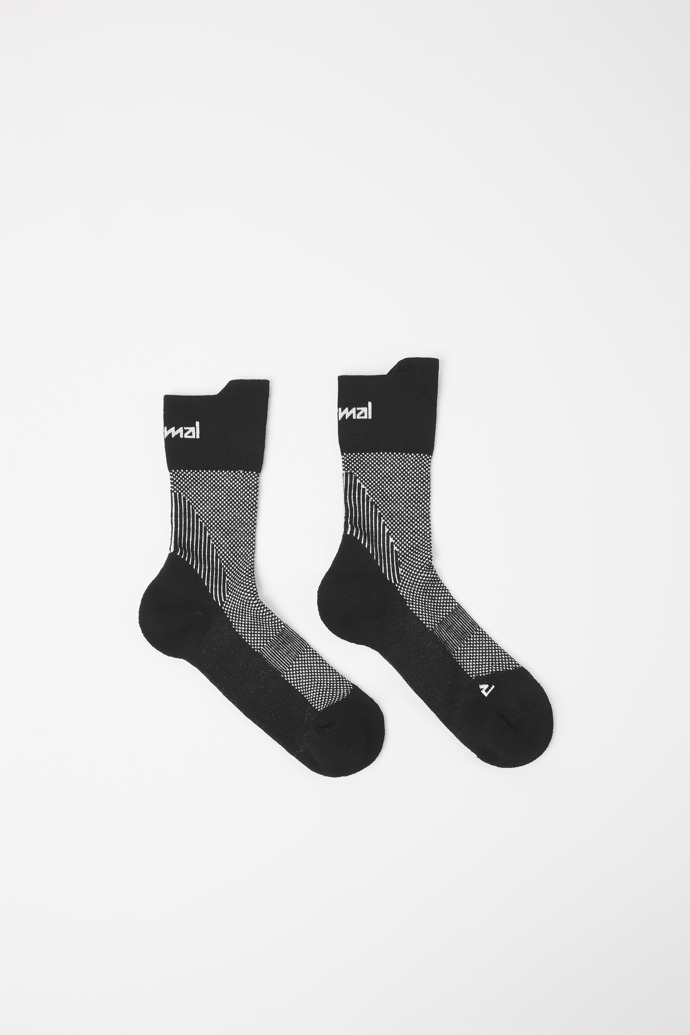
Advantages of
Light Running Shoes

Light outdoor footwear has recently seen remarkable success, especially in the field of trail running equipment. This trend can be explained by their numerous advantages that combine the characteristics of both competition and training shoes, thus offering a versatile solution suitable for various sporting needs. These versatile shoes bring significant benefits to runners of different levels and styles, highlighting their ability to adapt to different conditions and types of training.

What are light running shoes?
Light running shoes are defined as a compromise between competition models and training models. This type of shoe presents intermediate characteristics in terms of performance, profiles, and weight, offering unique versatility for different types of training and races.
They stand out for several advantages such as the balance between cushioning and stability, combined with exceptional responsiveness and fluid dynamics. Their design makes them ideal for adapting to a wide range of training sessions and competitions.
These models represent the perfect solution to avoid the excessive accumulation of specialized shoes, especially if you are passionate about them, as they are adapted to all types of terrains and training. Moreover, they relieve the uncertainty when choosing the appropriate shoe for your workouts, thus avoiding the difficulty of knowing which model to use for each occasion.
With the vast range of models and categories available, as well as the various technologies designed to optimize the running experience, choosing the perfect one can become a challenge. The key is to understand the specific features of light running footwear to ensure a good purchase that meets your individual needs and preferences.
Which light running shoes to buy?
Light running equipment represents a unique category in the world of sports shoes, designed for runners looking for versatility in their training. When choosing your ideal shoes, it is essential to consider specific aspects that maximize your running experience. Here are some key guidelines for selecting the most suitable trail running shoes:
1.Performance Features:
Evaluate the performance characteristics that match your goals. Before deciding which one to buy, determine its use and the type of runner you are. If you are looking for a fast or "flying" shoe, choose a model offering quick and light response. For varied trainings and less competition-focused, look for a balance between cushioning and responsiveness to maximize the shoe's lifespan and reduce injuries.
2. Weight and Construction:
The lightweight construction is a distinctive feature. Therefore, it is crucial to take into account your weight when choosing, as lighter runners can benefit from minimalist models, while heavier ones may need more cushioning. Pay attention to the lacing system; an asymmetrical system can increase support and reduce pressure points on the foot. Also, ensure that the upper part is made with materials that are resistant to wear and weather. Materials such as TPE are both resistant to abrasion and snags, allowing you to wear them longer on the road and in the woods without scratching.
3. Versatile Cushioning:
Opt for cushioning that offers both comfort for long distances and responsiveness for sprints. Running footwear is often recognized for its benefits such as providing an ideal balance between protection and agility, making them perfect for their purpose.
4. Sole and Traction:
The sole should be suitable for all types of surfaces and training. Ensure that the traction is adequate for different terrains, whether it be asphalt, dirt, or even less rugged trails. Advanced materials like VIBRAM Litebase technology can offer soles up to 50% thinner and 30% lighter without compromising stability. Additionally, for dry or wet terrains, shoes such as the NNormal Tomir also incorporate VIBRAM Megagrip, ensuring excellent grip on all terrains.
5. Reviews and Critiques:
Consult the reviews of other runners. Feedback from those who have already tested the model can offer valuable information on performance and durability. The more information you collect, the less likely you are to make a mistake when buying your running shoes. By taking into account these specific aspects, you will be able to make an appropriate decision that matches your needs, training goals, and exceeds your expectations.

What are the advantages of light running shoes?
1. Versatility:
The main advantage lies in their versatility. Designed to perform in a variety of situations, from speed races on track to longer workouts on varied terrains, their adaptability makes them an ideal choice for runners looking for a pair of shoes that can meet different needs.
2. Lightweight:
Many running shoes incorporate technologies that reduce the total weight of the shoe, offering an agile and quick feeling. They are perfectly suited for runners who want to improve their speed and efficiency without sacrificing comfort during longer runs.
3. Balanced Cushioning:
While mixed shoes generally offer lighter cushioning than traditional running shoes, they still provide an adequate level of shock absorption. This ensures the advantage of comfort during intensive races and allows runners to maintain a fast pace without sacrificing joint protection.
4.Smooth Transition:
The advantage is that they are designed to promote a smooth transition between the impact phase and the foot take-off, mixed running shoes encourage an efficient running style, beneficial for beginners wishing to improve their technique as well as for experienced runners wanting to optimize their performance. The EVA midsole of the NNormal Tomir, with a height of 31/23 mm and a drop of 8 mm, is a perfect combination of lightness, cushioning, and rebound. Whether you are looking to improve your personal record or strengthen your muscles when climbing stairs, the combination of this material and the elevation it offers provides the support you need with every step.
5. Durable Outsole:
Although they are designed for faster races, mixed sneakers often have durable outsoles that withstand wear. They thus represent a viable option for runners in search of shoes that can endure many kilometers, whether on asphalt or more irregular surfaces.
6. Performance Improvement:
For many runners, the use of mixed shoes can translate into a significant improvement in performance, especially during speed races. The combination of lightweight, effective cushioning, and smooth transition can make all the difference in terms of time and personal results.
Light running shoes offer numerous advantages and a balanced solution meeting the needs of various runners. Their versatility, light weight, balanced cushioning, and other features, make them an attractive choice for those looking for a shoe suitable for both weekly training and weekend competitions. Discover more information about NNormal's light running shoes.
Photography: Nick Danielson
Share with a friend

Your NNormal shoes come with a free gift!
1. Add your favourite NNormal Tomir (Tomir 01, Tomir 02, Tomir WP) or NNormal Kjerag 01 shoes to the cart. 2. Once you are ready to order, copy the following code and paste it into the “Promotional code” box in the cart: FREESOCKS24 3. The socks will be automatically added to your cart. 4. Complete your purchase.